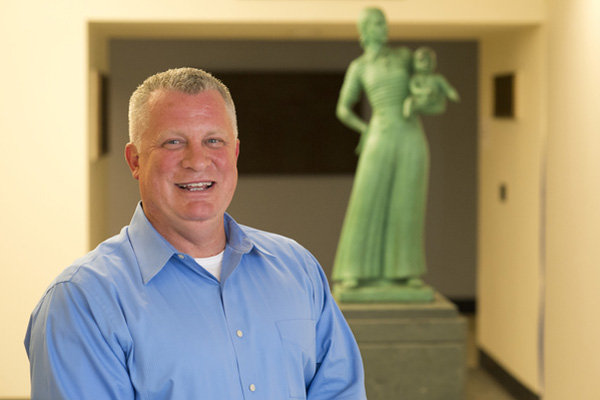A new era for human fertility research

Conventional wisdom holds that a human female fetus produces roughly 7 million egg cells over the first half of pregnancy. By birth, a baby has but one million left and the number remains at about 200,000 once the body is reproductively mature. After menopause, none remains.
These numbers have been around since the 1950s, when researchers physically counted the number of healthy egg cells in human ovaries over the course of a lifetime. They observed the total number of eggs progressively decreased with age and assumed this meant no new eggs were being produced.
“It is an important assumption because it has guided every decision made for five decades regarding how the ovaries form, function, and fail,” said Jon Tilly, who joined Northeastern’s faculty this fall as professor and chair of the Department of Biology.
The assumption held until 2004, when Tilly’s lab at the Massachusetts General Hospital published research that completely overturned this long-held paradigm of reproductive biology and could lead to novel clinical approaches to combat infertility and perhaps even stave off menopause.
At the time, Tilly’s lab had developed very sensitive ways to measure cell death and was exploring basic science questions such as why the body creates so many eggs, only to use so few and let the rest die off.
Others had studied healthy egg loss over time, but Tilly was the first to measure egg death. His findings were confounding: the rate of egg cell death was actually two to three times faster than the rate of healthy egg loss over time. Tilly explained it in terms of a bank account: if you have $1,000, withdraw $500, and still end up with $1,000, then there must have been a $500 deposit. But there’s no such thing as a deposit when it comes to egg cells. Right?
Wrong. Female fish, flies, and virtually all other non-mammalian animals have oogonial stem cells, a special kind of stem cell that creates new eggs. Armed with this knowledge, Tilly’s group began searching for them in mammals, figuring they were the only logical source of new egg production. “I dropped all the cell death work in my lab,” Tilly recalled, “and reconstructed it to focus on cell regeneration.”
Despite facing significant pushback from fellow colleagues, who clung to long-held assumptions that mammals don’t produce new eggs, Tilly’s team pressed forward. It ultimately identified oogonial stem cells in mouse ovaries, purified them, and showed that they do in fact produce new, viable eggs. Then, in 2012, the team published research in which it identified the same cells in adult human ovaries and again showed that they produce viable new eggs.
“We finally had proof that this basic event of germ cell renewal was conserved from flies to humans, not just in males, but in females as well,” Tilly said.
The discovery has opened the floodgates for new clinical approaches. Now at Northeastern, Tilly and his colleagues are applying their knowledge of oogonial stem cells to develop more successful fertility treatments. In 2011, Tilly co-founded OvaScience, a Cambridge-based biotechnology company focused on developing and delivering new fertility options for women having difficulty conceiving a child.
In addition to his fertility research, Tilly has for more than two decades aspired to find a way to stave off menopause as a means to increase quality of life in older women. Are his team’s discoveries the key to fulfilling his research objective?
“This is not yet a reality; it’s what we’re shooting for,” he said. “Ten years ago, egg cell renewal wasn’t even on the drawing board. Now look where we are now. Who is to say that 10 more years of work will not lead to a re-write of the entire landscape of ovarian biology and aging?”





